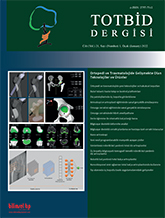
Three dimensional computed tomography (CT) based robotic arm assisted knee arthroplasty is a technological advancement that has been in use for 16 years. A real knee model created from the CT scans is used to plan the surgery and the procedure is carried out with the assistance of a semi-active robot with haptic feedback. The robotic system can be used both for total and partial knee replacement and results in increased precision and accuracy for the bone cuts and excellent soft tissue balance. The early functional outcomes of robotic arthroplasty are superior to manual surgery and have lower early revision rates. The effect of robotic surgery on long term outcomes has not been determined, however the increased accuracy of placement of the components in three planes is expected to lead to better survival rates. High costs and exposure to additional radiation during CT scans are the main disadvantages.